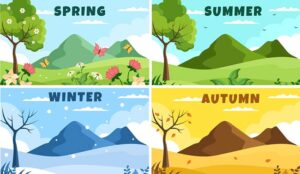Mike Smith and Chris Middlemass of Domestic & General share their advice for handling seasonal peaks and troughs in contact volumes, taken from personal experience.
How do you maintain a fully staffed contact centre between November and January, traditionally the busiest industry periods?
Like many businesses, our industry sees seasonal peaks and troughs. There can be significant drops in demand in the middle of December and then increased demand again in January. This pattern has been a constant challenge for the contact centre, often leading to high abandonment rates and low speed to answer and by extension to poor service and poor agent engagement, which impacts on our ability to maximise revenue in this busy period.
This year we took a slightly different approach with a newly formed contact centre leadership team and worked collaboratively to come up with a series of initiatives to help us handle our customer calls through peak seasons.
Overall, our new approach proved successful and below are a few best practices which we picked up along the way.
Best Practices for Seasonal Workforce Management (WFM)
Here are our reflections on what was a successful period for Domestic & General.
1. Plan to Ramp Up
It’s not a surprise, we know it’s coming, and the key is to get your forecast right. Plan to ramp up, budget for it, work with your recruitment and training teams in advance.
In our business, in order to ramp up supply to cover peak demand, recruitment must exceed attrition from August to October.
In our business, in order to ramp up supply to cover peak demand, recruitment must exceed attrition from August to October.
Acknowledge that while you ramp up you have periods of availability, so push as much investment time out as you can so your employees are the best trained and the most engaged, and ready to engage over your busiest period.
2. Build in Flexibility
Best-laid plans can go astray, so plan in flexibility and agree it up front by working with the senior operational leaders.
Similarly, the time spent agreeing parameters saves time and also ensures you can act swiftly when things do go wrong. For instance, can we overflow calls to other areas? What would be your first option for extra off-phone development time? Should we push up the annual leave quota?
We cannot stress the importance that this is a collaborative piece of work, not just planning driven, and drives a real one-team culture.
3. “Show Me the Money”
Work collaboratively and commercially. It’s very easy to be penny rich and pound poor. Know the drivers in your business and, if AHT in your biggest sales area is offside, start to understand why by using data-driven insights.
The temptation is to try to get AHT down without understanding the drivers. Instead, work collaboratively with operational colleagues to find solutions…
The temptation is to try to get AHT down without understanding the drivers. Instead, work collaboratively with operational colleagues to find solutions, and if you have spare resource don’t be frightened to use it. Strike the balance between sales and service.
4. Work Back to Front and Vice Versa…
… if you still have spare capacity as you ramp up and down. For instance, our peak months are specifically November and January, with a drop off in demand for December. We know this is coming so we work the plan, using this period to cover off key professional development training or catch up on back-office tasks.
Equally, if you are struggling at points to handle, for example on Monday morning, it’s not a bad idea to train non-customer-facing colleagues on your simplest call types that have volume. They can take the sting out of the day.
5. Don’t Sweat the Small Stuff – But Do Control the Big Stuff!
All planners fear changes that can blow a plan out of the water, so these need to be carefully assessed and implemented.
But it’s worth remembering that we can be a controlling bunch and sometimes we need to let go of small things that can’t really break the plan or the customer service. Remember, the worst-case scenario rarely happens.

We can be a controlling bunch and sometimes we need to let go of small things that can’t really break the plan or the customer service.
Domestic & General has a hugely empowered culture and we learn to embrace that rather than becoming King Canute.
6. Fail Fast (and Hopefully Sometimes Succeed Fast Too!)
For those old enough to remember, Dr Pepper had a strap line ‘What’s the worst that can happen?’ If you want to try something and you can roll it back, then why not give it a go?
If something really isn’t working, then be decisive and change tack.
On one occasion, colleagues wanted to do short sharp activities. You can impact assess the life out of something or give it the green light knowing you can roll it back.
7. “Give Me a Break!”
Understand your people and how they consume annual leave, what key events are on in your location and what makes your centre what it is.
Understand your people and how they consume annual leave, what key events are on in your location and what makes your centre what it is.
We have a centre in Brighton, where the annual pride festival is a huge event. Nottingham has a significant Muslim population who want adjustments to shifts during Ramadan and rightly want religious festivals off, alongside other religious groups.
So, we work with the operational teams to give as much annual leave as possible. Facing into the amount of extra holidays to give out reduces on-day absence, which allows us to use our whole estate more effectively and engage our teams.
For some great advice for better handling seasonal peaks in contact volumes, listen to the following episode of The Contact Centre Podcast, with John Casey, a Resource Planning Expert.
The Contact Centre Podcast – Episode 14:
WFM Tricks That Will Get You Through Busy Periods
For more information on this podcast visit Podcast – WFM Tricks That Will Get You Through Busy Periods
Measures of Success
It’s quite easy to just take our word for it that all of these best practices resulted in a successful resource planning period, but here are a few measures that helped us to gauge our positive impact.
Time to Answer – Year-on-year we improved our average time to answer customers by 58%.
Sales – We gave the business better opportunity to sell; with the additional calls answered, this equated to an opportunity of £1million.
Chairman of the Board – David Tyler, Chairman at Domestic & General Group, mentioned in his update the success of this peak and thanked everyone in the contact centre.
Recognition – The real-time team (usually the public face of planning in most organisations) led by Mike Blewitt, Routing & Real-time Manager at Domestic & General, won the global culture award for the quarter, which is a huge achievement and honour.
This year we have even more initiatives, such as guaranteeing birthdays off and allowing our frontline colleagues to buy up to five additional days’ holiday…
Holidays – Historically, there has been a culture of huge holiday carry-over, so we reduced holiday carry over by 66% using an intraday automation tool to automate the process and be proactive with key events within our estate.
This year we have even more initiatives, such as guaranteeing birthdays off and allowing our frontline colleagues to buy up to five additional days’ holiday. We also prioritise block bookings so colleagues can have well-earned time with their friends and family.
Attrition and Engagement – We are eagerly awaiting the formal release of our annual engagement survey, but early indications are that levels have improved statistically significantly. This shows in the lower attrition and absence.
Simply put, get this right and we become a better place to work!
Lessons Learned
From our new approach and experience within resource planning, here are two key lessons that we’ve learned regarding seasonal WFM.
1. Every Silver Lining Has a Cloud
We now have what is being termed as “a better class of problem” – too many people.
Previously, we experienced peaks with colleagues leaving us for other jobs; now this is a better place to work, our attrition is dropping.
We have established a range of activities to use the temporary spare capacity from new outbound data sets, allowed our colleagues to become digital advocates and increased the development time we offer to the frontline.
We have established a range of activities to use the temporary spare capacity from new outbound data sets, allowed our colleagues to become digital advocates and increased the development time we offer to the frontline.
We are now looking 12 months ahead and reshaping our plan and tracking our emerging trends on reduced attrition. We’ll have to get creative, so watch this space.
2. Do Your Tech Research
Mike’s 17-year-old daughter regularly gives him a lecture with PowerPoints on how businesses consistently uses the terms AI and robots interchangeably!
There is a lot of technology out there. Choose wisely, do your research, get independent advice, and commit to realistic business cases. We will only get better through future years.
Final Thoughts
If we don’t work as a team, none of this is possible. Our 1,500 frontline colleagues, team leaders, operations managers and site directors have been amazing. Nothing is solely achieved through planning; we all work as a team to deliver the plan.

Mike Smith and Chris Middlemass
Successful plans are built on collaboration, so without operational input from the off, there is a risk that teams will not be as engaged and may be resistant.
Be the honest friend and communicate constantly, ensuring you work together. This was a massive team effort from the whole of the contact centre, and we have seen a marked difference in our contact centre performance.
Thanks to Domestic & General’s Mike Smith, Director of Operational Support, and Chris Middlemass, Head of Planning, for sharing this article with us.
For more of contact centre WFM, read our articles:
- The Fundamentals of Contact Centre Peak Management
- How to Avoid Schedule Dissatisfaction
- What Is Workforce Management (WFM)?
Author: Robyn Coppell
Published On: 13th May 2019 - Last modified: 13th Aug 2025
Read more about - Workforce Planning, Editor's Picks, Forecasting, Workforce Management (WFM), Workforce Planning








































